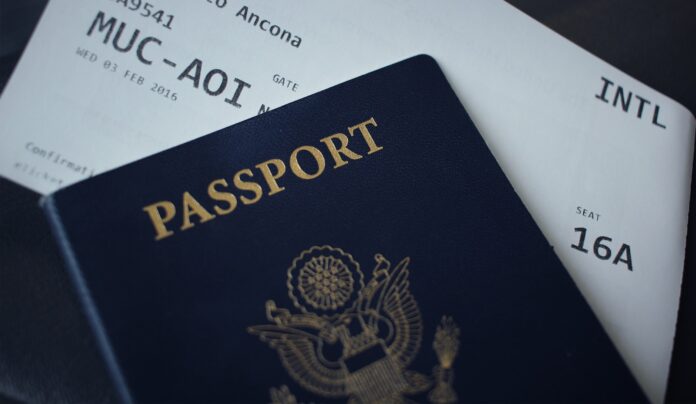Introduction
Travel insurance is a crucial aspect of trip planning that often gets overlooked. It provides financial protection and peace of mind by covering unexpected events such as trip cancellations, medical emergencies, and lost belongings. Choosing the right travel insurance can seem daunting, but understanding your options and needs will help you make an informed decision. This guide outlines key considerations and steps to ensure you select the best travel insurance for your trip.
1. Assess Your Coverage Needs
Medical Coverage
- Overview: Medical coverage is essential for protecting against unexpected health issues while traveling. This includes hospital visits, emergency medical treatment, and evacuation if necessary.
- Considerations: Check if the policy covers pre-existing conditions and the level of coverage for medical emergencies. Ensure it includes evacuation coverage, especially if you are traveling to remote areas.
Trip Cancellation and Interruption
- Overview: This coverage reimburses you for non-refundable trip expenses if you need to cancel or cut short your trip due to unforeseen circumstances such as illness, family emergencies, or travel disruptions.
- Considerations: Review the reasons covered for trip cancellation and interruption. Look for policies that provide comprehensive coverage for a wide range of scenarios.
Baggage and Personal Belongings
- Overview: Baggage coverage protects against lost, stolen, or damaged personal items during your trip. It also includes coverage for delayed baggage, which can be particularly useful if your luggage is delayed.
- Considerations: Verify the policy limits for baggage coverage and the process for filing claims. Ensure the policy covers high-value items and has sufficient limits to replace your belongings.
Travel Delay
- Overview: Travel delay coverage compensates for additional expenses incurred due to travel delays, such as accommodation, meals, and transportation.
- Considerations: Check the policy for the minimum delay time required before coverage kicks in and the maximum reimbursement limits for expenses.
Emergency Assistance
- Overview: Emergency assistance includes 24/7 support for travel-related emergencies, such as arranging medical care, transportation, or finding local resources.
- Considerations: Ensure the insurance provider offers comprehensive emergency assistance and has a reliable support network. Verify the availability of support in your destination.
2. Compare Policies and Providers
Research Insurance Providers
- Overview: Different providers offer varying levels of coverage, customer service, and claim processing. Research reputable insurance companies to find one that suits your needs.
- Considerations: Look for providers with strong customer reviews, financial stability, and a history of prompt claims processing.
Compare Coverage Options
- Overview: Use comparison tools or consult insurance brokers to evaluate different policies. Pay attention to the coverage limits, exclusions, and overall cost.
- Considerations: Focus on policies that offer comprehensive coverage for your specific trip needs. Compare benefits and limitations to ensure you get the best value.
Understand Policy Exclusions
- Overview: Insurance policies often have exclusions that outline what is not covered. Understanding these exclusions helps avoid surprises when filing a claim.
- Considerations: Review the exclusions carefully, including coverage for high-risk activities, travel to certain countries, or specific medical conditions.
3. Consider the Type of Travel Insurance
Single-Trip Insurance
- Overview: Single-trip insurance covers one specific trip, including all its aspects from departure to return.
- Considerations: This option is ideal for occasional travelers who do not travel frequently throughout the year.
Annual Multi-Trip Insurance
- Overview: Annual multi-trip insurance provides coverage for multiple trips within a year, often with no limit on the number of trips.
- Considerations: Suitable for frequent travelers who want to avoid purchasing insurance for each individual trip.
Long-Term Travel Insurance
- Overview: Long-term travel insurance covers extended trips, often lasting several months to a year.
- Considerations: This type of insurance is ideal for gap years, long-term vacations, or working holidays.
4. Read the Fine Print
Policy Terms and Conditions
- Overview: Carefully review the policy terms and conditions to understand coverage details, claim procedures, and any limitations.
- Considerations: Ensure you are aware of the policy’s duration, geographic coverage, and any conditions that may affect coverage.
Claim Process
- Overview: Familiarize yourself with the claim process, including required documentation and deadlines.
- Considerations: Choose a policy with a straightforward claim process and reliable customer support to assist you with any issues.
Customer Reviews and Ratings
- Overview: Read customer reviews and ratings to gauge the experiences of others with the insurance provider and policy.
- Considerations: Look for feedback on claim experiences, customer service, and overall satisfaction with the policy.
5. Finalizing Your Purchase
Get Quotes
- Overview: Obtain quotes from multiple insurance providers to compare costs and coverage options.
- Considerations: Ensure the quotes are based on similar coverage levels to make an accurate comparison.
Purchase Your Policy
- Overview: Once you have selected a policy that meets your needs, proceed with the purchase. Make sure to review the policy documents and keep a copy for your records.
- Considerations: Verify that all personal information is correct and that you understand the policy’s coverage and exclusions.
Keep Documentation
- Overview: Retain copies of your policy documents, proof of purchase, and any relevant correspondence.
- Considerations: Having these documents readily available will streamline the process if you need to file a claim.
“Travel with Confidence: Choose the Right Insurance for a Safe and Enjoyable Journey”
Conclusion
Choosing the best travel insurance involves evaluating your coverage needs, comparing policies and providers, and understanding the terms and conditions. By following these steps, you can ensure you have the right protection for your trip, allowing you to focus on enjoying your travels. For more travel tips and to plan your next adventure, visit Tourlik. Please note that the information provided is accurate to the best of our knowledge, but details may change. Always check for the most current information and bookings on Viator’s website.


